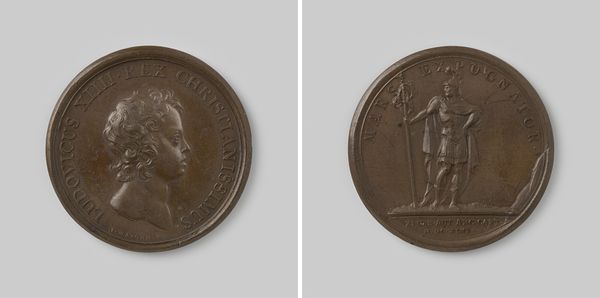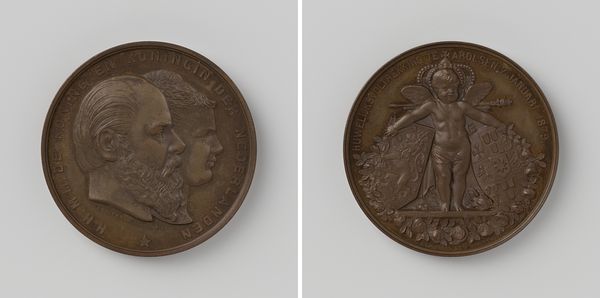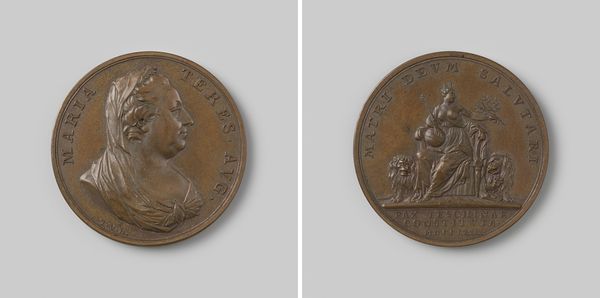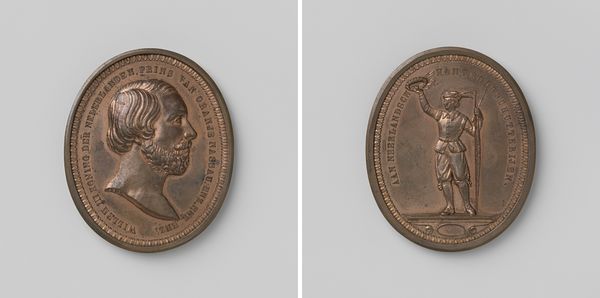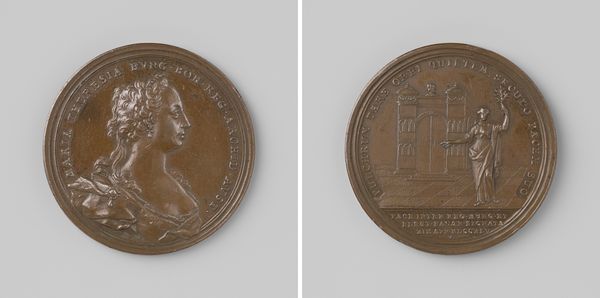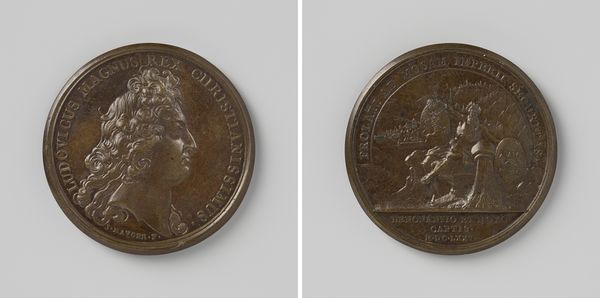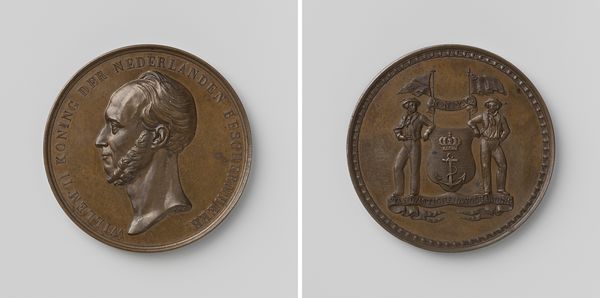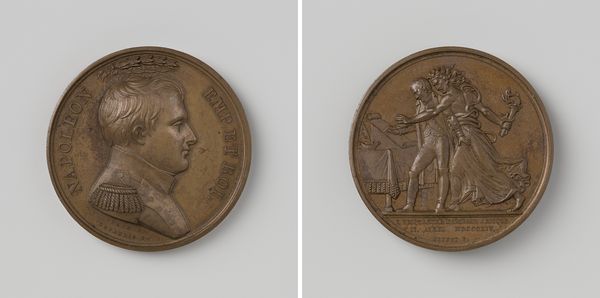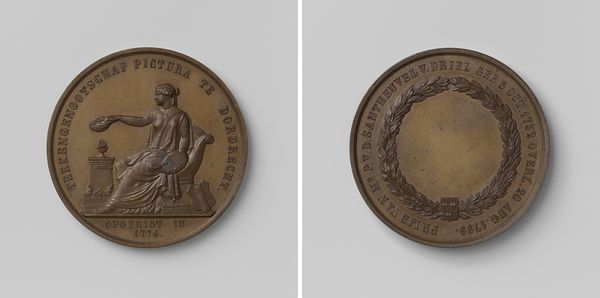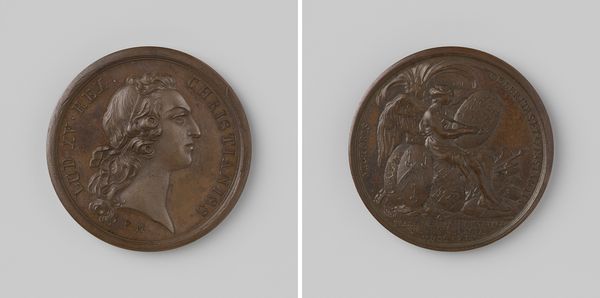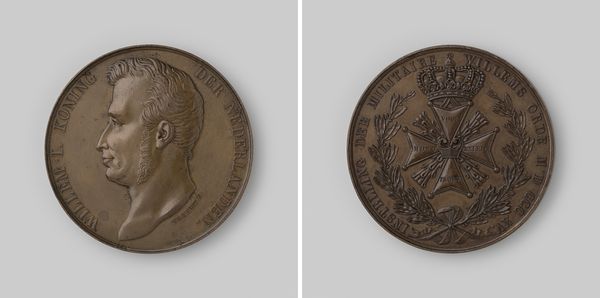
Neerlands Handboog Schutterijen, penning ter ere van Willem III, koning der Nederlanden 1851
0:00
0:00
davidvander18041879kellen
Rijksmuseum
metal, bronze, sculpture
#
portrait
#
medal
#
neoclacissism
#
metal
#
sculpture
#
bronze
#
sculpture
#
genre-painting
#
history-painting
Dimensions: height 5.8 cm, width 4.8 cm, weight 49.16 gr
Copyright: Rijks Museum: Open Domain
Curator: Here we have a bronze medal, "Neerlands Handboog Schutterijen, penning ter ere van Willem III, koning der Nederlanden," created in 1851 by David van der Kellen. It's currently held in the collection of the Rijksmuseum. Editor: It strikes me as incredibly self-assured, almost arrogant. The clear separation of the two scenes, combined with that bronze, makes for an object intended to last, and be seen as a firm marker of authority. Curator: Absolutely, it’s designed to project power. The medal is split into two faces. On one side, we have a portrait of Willem III in profile. This evokes the visual language of Roman emperors. Medals historically functioned not only as commemorative objects, but also as a mode of disseminating power through imagery. Editor: So the material itself, bronze, already implies longevity and a sort of strength that’s baked in during production, and also the very act of minting something – that has a potent, industrial, stamp of power and social organization behind it. It's fascinating to consider the labor, the access to materials, the technology… it's all right here, implied. Curator: Precisely. And turning to the other side of the medal, we see an allegorical figure representing the Dutch civic guard, specifically the archers’ guild. They’re a symbol of civic duty and national pride, hearkening back to the medieval period when archers were crucial for defense. The inscription reinforces the dedication to Willem III, tying him to this historical lineage of civic strength. It speaks to a desire for a perceived continuity, a rootedness. Editor: It does raise the question: why a medal? I mean, you could argue a painting, a sculpture... But the thing about medals is their capacity to be reproduced en masse, to enter everyday circulation, almost. And the deliberate connection between the elite—the king—and the archers points to a tactical awareness of class and social power. Curator: A keen observation. Through imagery, the medal suggests an integrated national identity, something forged through material culture that could be circulated, touched, held. Editor: Exactly. Thinking about how this was crafted, multiplied, and distributed gives me a whole new appreciation for its potency. I see less regal aloofness now, more carefully considered message woven into material form. Curator: It all underscores how artistic choices play a significant role in solidifying power and legacy, right down to the specific medium used.
Comments
No comments
Be the first to comment and join the conversation on the ultimate creative platform.
